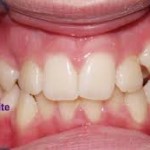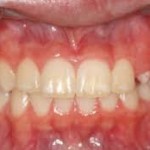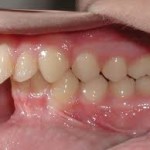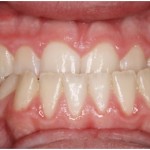Did you know there is a direct correlation between your bite and your overall health? When your teeth and jaws are not properly aligned, it may affect your breathing, speech, and, in extreme cases, even affect the appearance of your face and profile. As a result of a bad bite, formally referred to as “malocclusion,” your teeth may become crooked, worn down, or protrude over time. Most people experience some degree of malocclusion, and if it is serious enough, orthodontic treatment may be necessary to correct the issue.
Some types of malocclusion include crossbites, overbites, and underbites. So, what exactly, is the difference between the three?
· Crossbites, which can involve a single tooth or a group of teeth, and usually causes one or more upper teeth to bite on the inside of the lower teeth. Crossbites usually correlate to a narrow upper jaw. A crossbite can happen in the front and/or the sides of the mouth, and is known to cause wear of the teeth, gum disease and bone loss.
Overbite is often confused with the term “overjet.” Overbite refers to the vertical overlap of the upper front teeth over the lower front teeth. A shallow or deep overbite are types of malocclusion, and either end of the spectrum can result in a variety of problems.
Overjet refers to the horizontal distance between the upper front teeth and lower front teeth. If the upper teeth stick way out past the lower teeth, this is called excess overjet. This can lead to gum irritation, wear on the lower teeth, and can even cause painful jaw and joint problems. Problems with overbites and/or overjets can usually be traced to genetics, bad oral habits, or overdevelopment of the bone that supports the teeth.
Underbites occur when the lower teeth protrude past the upper front teeth, and are caused by undergrowth of the upper jaw, overgrowth of the lower jaw, or both. This in turn can lead to tooth wear and pain in your joints and jaw. Underbites can also be an esthetic concern for the patient, and can even leadto speech and articulation problems.




